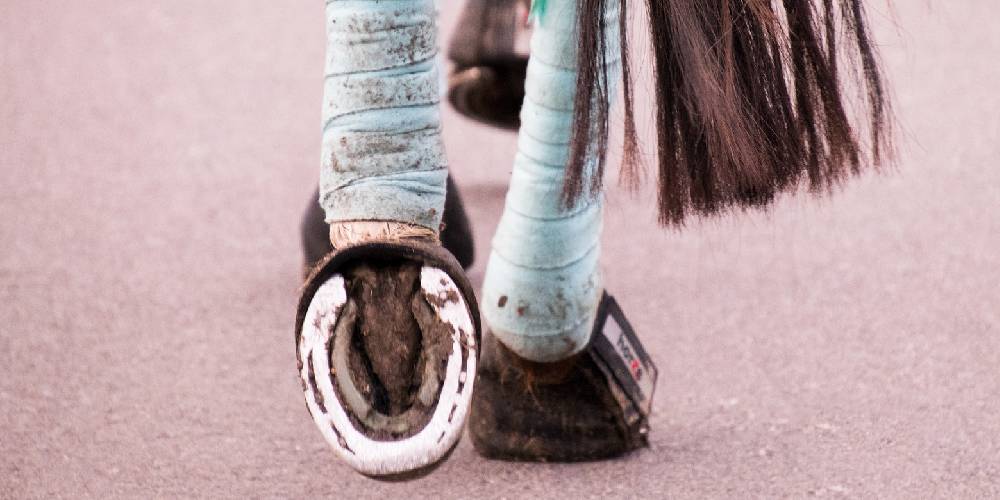People are sometimes amazed that horses have shoes and often ask questions about them. The most commonly asked questions are: “What are horse shoes and why do horses need them?” “How are they put on?” and “Does it hurt the horse?”
Luckily, all of these questions have answers.
What are Horse Shoes and Why do Horses Need Them?
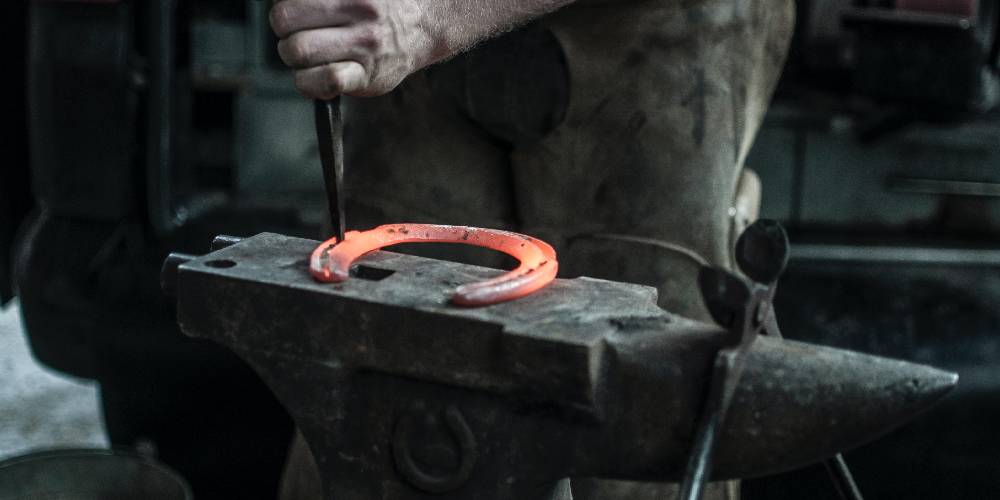
Horseshoes are made of metal which is shaped and fitted to match each hoof and give the foot the support and protection it needs. Horseshoes are needed to offer an extra protective layer to a horse’s hoof to reduce the wear and tear that riding, exercise, and competition induces on the feet. Some horses need corrective shoeing so special shoes are used to correct the balance of the foot and temporarily solve the problem.
The Shoeing Process
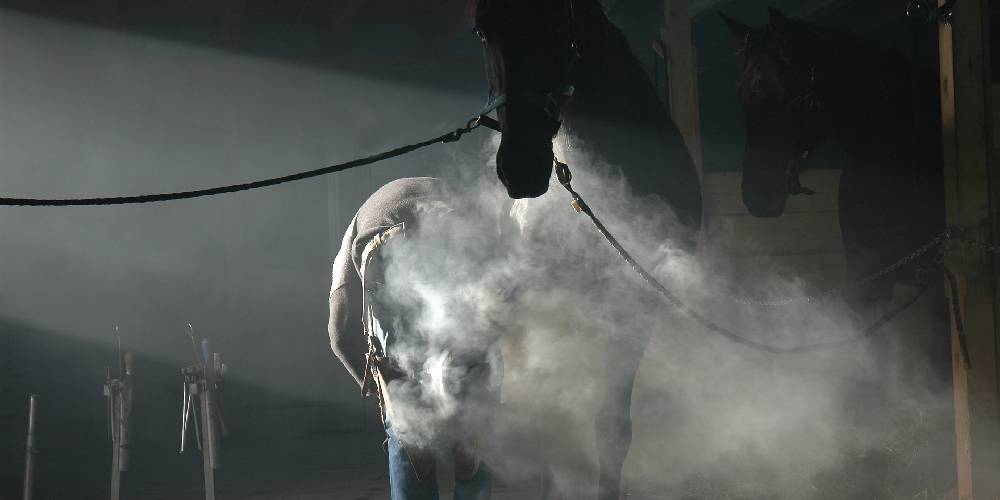
Horse shoes are put on by someone called a farrier (or a blacksmith). Shoes are made with metal (typically aluminum or steel) which are held in place with specific nails meant for use on horses.
Step One
Before the farrier sizes and applies new shoes, they must remove the old shoes and nails put in place at the last visit. A tool, sometimes called pull-offs/pullers/clenchers, is used to carefully pull up all around the shoe until it is completely removed. Some farriers may use a hammer and buffer to pull (more like pound) shoes off
Step Two
Once the hoof is clear, the farrier then uses a pair of hoof-nippers to pull and clip off the dead/overgrown wall and horn that grew out since the last appointment.
Step Three
Using a hoof knife, the farrier will then cut and scrape off the grown-out sole.
Step Four
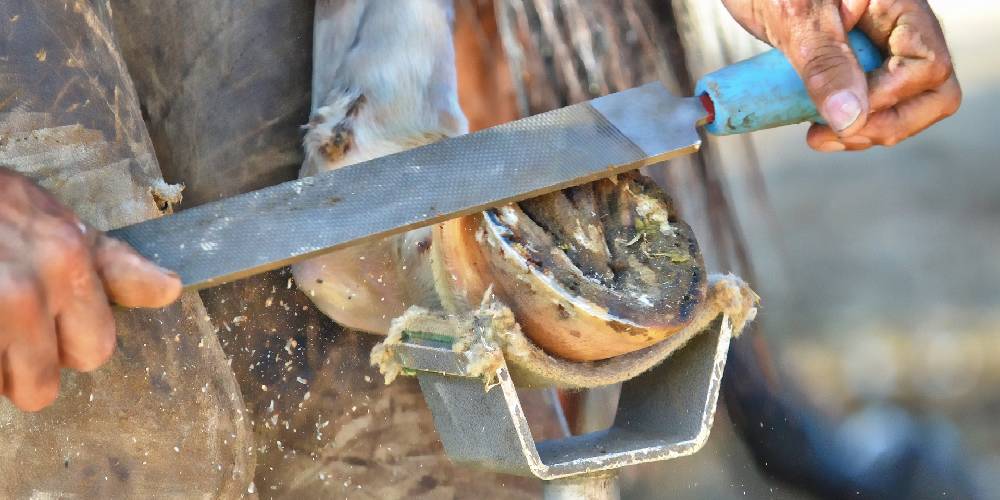
Afterwards, a file may be used to smooth and level the hoof to make the shoe sit flat and snug.
Step Five
When the hoof is fresh and neatly trimmed and filed, the farrier will then choose a shoe of the correct size needed for the horse.
Step Six
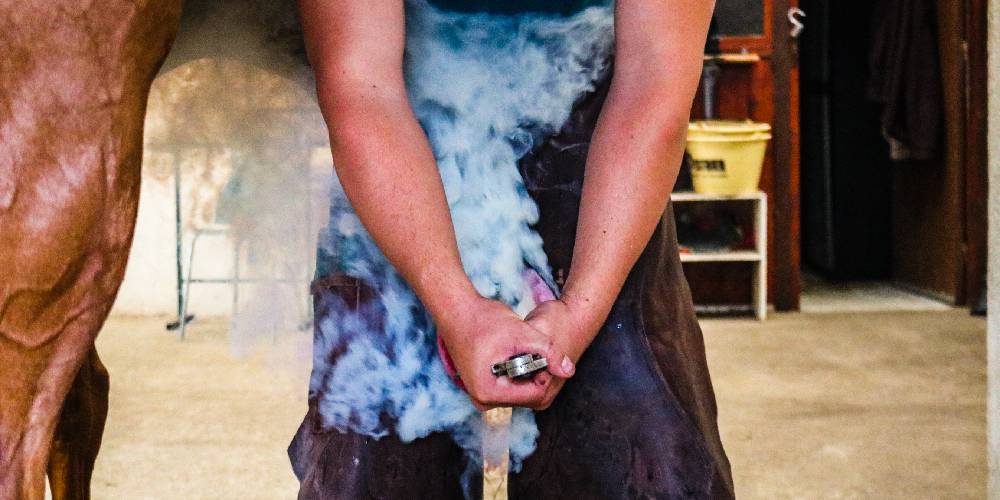
The farrier that I used while I had my Arabians didn’t use a forge when shoeing my horses. Some farriers, however, will use a forge to make the shoe hot and more pliable. Once the shoe is hot and glowing red, it is pressed onto the hoof to leave a blackened mark. This mark shows the farrier where the shoe would sit on the horse and lets them see what alterations need to be made to the shoe.
Step Seven

Using an anvil, the farrier then shapes the shoe with a hammer until satisfied. If the shoe was heated in a forge, the farrier would submerge it in cold water to reduce the temperature after it had been shaped. Then it is time for application!
Step Eight
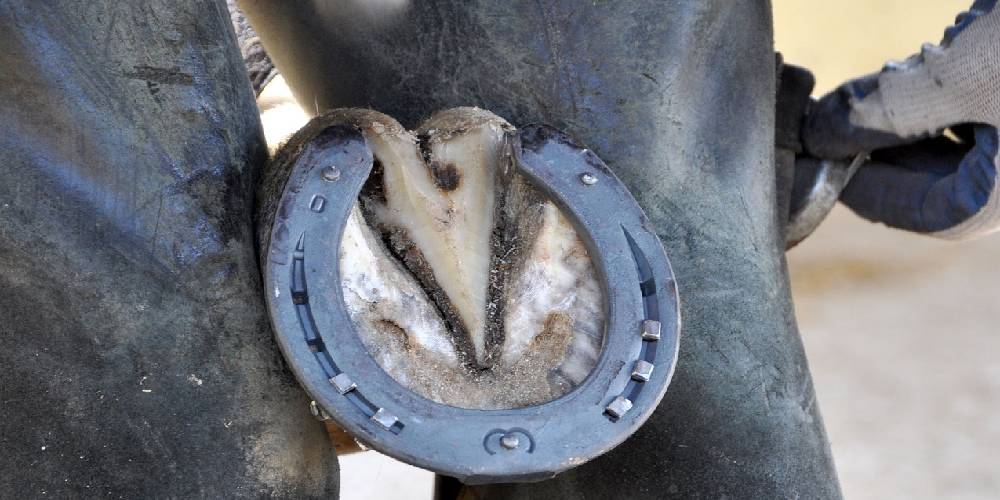
The shoe is then fitted and nailed into place using a hammer. Farriers don’t typically use all the nail holes on the shoe, they will usually just use the number of nails required for the horse based on the type of shoe, what the horse is used for, the hoof, etc.
Step Nine

After the shoe is on, the hoof is filed with a rasp to clean it up and make the end of the hoof meet the shoe evenly.
Tah Dah!
The final result? Beautiful, even, and clean hooves that will only keep clean for about a day. (My horses were turned out in a little barnyard/arena pretty much all day, every day, so there was plenty of dirt to go around)
Do Horse Shoes and the Application Process Hurt the Horse?
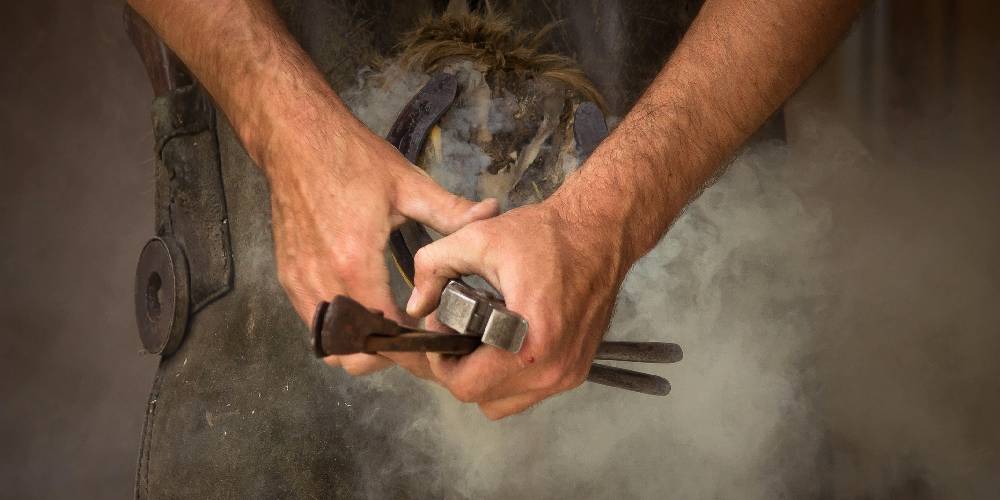
When some people hear about nails going into horses’ feet they immediately worry if it’s going to hurt the horse. The answer to that is no. Having hooves trimmed and shoes nailed in place would be like the same if you were clipping your fingernails or putting a hole in the end of your nail. It wouldn’t hurt you at all!
When hot shoes are pressed onto the horse’s foot for sizing, that doesn’t hurt either. The shoe is pressed into the hard, insensitive horn of the hoof.
There is one thing that can be painful to the horse. If a farrier is nailing the shoes in place, and they pound one into the sensitive part of the foot, this is known as a hot nail. A hot nail causes instantaneous lameness. Once the nail is removed, and no infection is caused, the horse should be able to move soundly without pain.
Do Horses Need Shoes?
No, actually horses don’t need shoes at all. Mustangs and other wild horses haven’t worn shoes in their life and they are healthy, strong, and surviving.
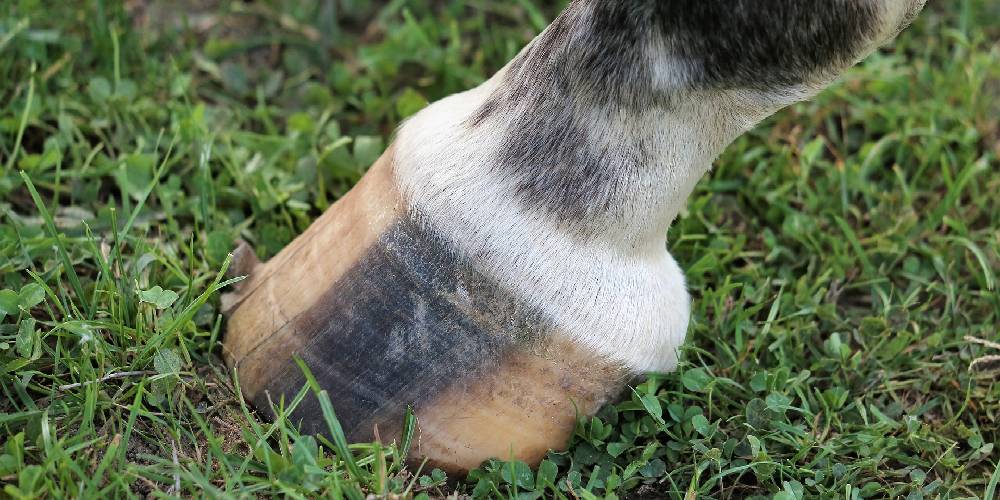
Horse shoes are things only used on the domesticated horse, and some domesticated horses don’t even use shoes. My first horse, Show-Me, didn’t wear shoes at all.
The reason that horse shoes are used however is because of the fact that the hoof is a fragile part of the horse. Hooves act as a cushion and absorb all the shock from the legs and the rest of the body landing on them. The shoe is there to give extra support and protection to the hoof to keep it strong, healthy, and sound.
Shoeing Options
Full Shoes
A full set of shoes, or to say your horse is fully shod, means that the horse has shoes on all four feet.
This option for shoeing is most popular on horses that are participating in frequent exercise, those that are used for showing and competition, horses used for endurance, and horses with weak or soft feet.

Front Shoes
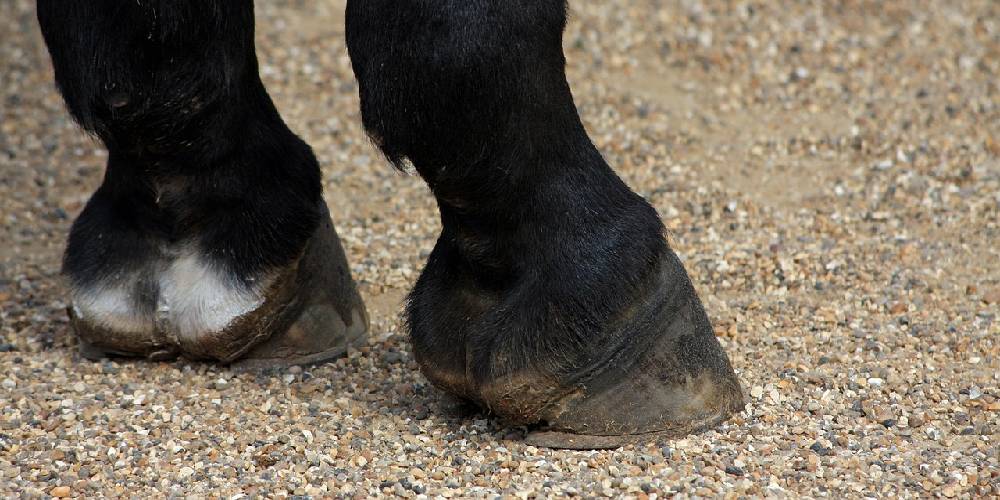
Shoeing a horse’s front feet is a great option if the horse isn’t in extreme or intense exercise and competition.
The purpose of front shoes is to give the horse support on his front hooves as the front end supports 60% of the horse’s weight, while also offering enough support to let the horse be ridden frequent;y
My two Arabians had only front shoes. This was great for them because I didn’t compete with them but still rode frequently so the support for their feet was perfect.
Barefoot
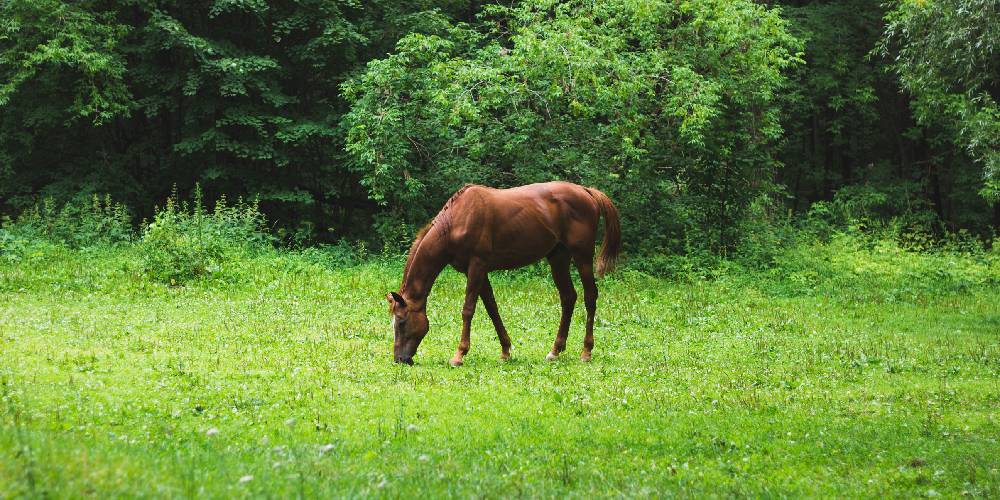
Horses that naturally have strong and hard feet, aren’t being ridden, or are wild go day to day without wearing horse shoes.
Barefoot hooves are often seen in horses that have been retired. Horses too old to be ridden and put at pasture for their retirement often don’t wear shoes. Because the horses aren’t being exercised, the natural cushion of their hoof is enough for them.
My first horse was ridden all the time by my sister and me and she didn’t need shoes. Her feet were solid and strong so shoes weren’t required
Barefoot horses may need to still see a farrier to have their feet trimmed.
Corrective Shoeing
Horses that have conformation issues, lameness problems, or other faults may require corrective shoeing. The reason corrective shoeing may be necessary is if the horse is uncomfortable, unbalanced, etc.
Oftentimes horses that require corrective shoeing are frequently sore and unsound.
FAQs about Horse Shoes
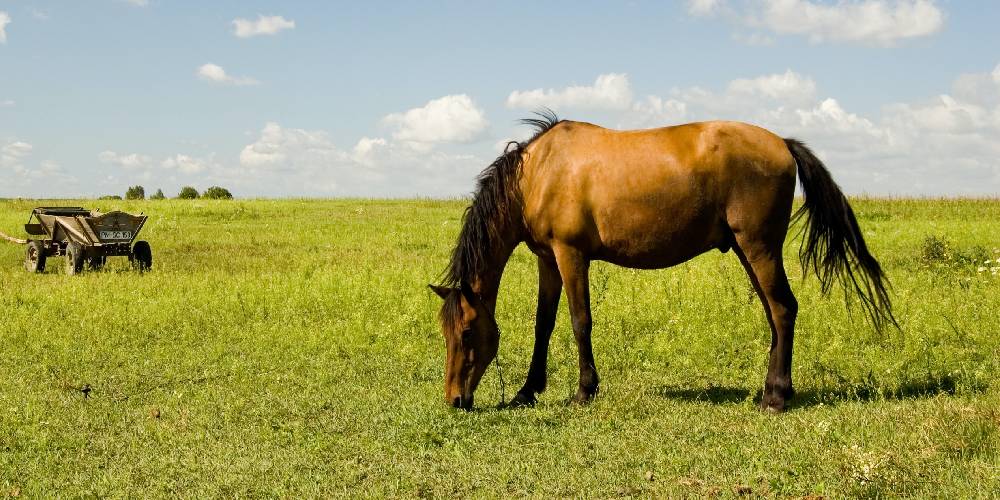
How often does my horse need to get new shoes?
Horses should be seen by the farrier to have their feet trimmed and re-shod between every four to eight weeks.
Horses in heavy or intense competition should see a farrier around every four to six weeks to ensure their feet are healthy, sound, and supported.
When a horse is turned out to pasture or ridden barefoot, their feet should be trimmed every six to eight weeks.
My horses were on an eight-week shoeing schedule with my farrier. By the time the farrier came the horses definitely needed new shoes. In the winter, my horses were more frequently ridden so in those months, the farrier came out every six weeks.
The shoeing schedule is unique to every horse’s needs and should be determined with your farrier.
What should I do if my horse loses a shoe?
If your horse throws a shoe, or if you notice one is loose, make sure that it is put back on as soon as possible.
If a shoe is thrown and the horse is newly shod, call the farrier out on an emergency visit and they should put the shoe back on for you.
If the shoe has been on for a while and the next farrier visit is soon, ask your farrier to just do the trimming and shoeing when they’re there to save time.

